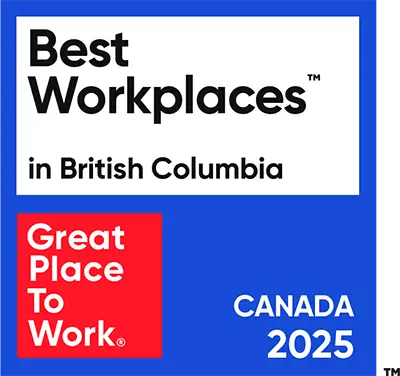The Future of Prefabricated Construction.
Prefabricated construction (aka prefab construction) dates back centuries, gaining popularity in the 19th century and stepping in to solve the housing shortages post-World War II. But this doesn’t mean prefab is an outdated practice. In fact, today’s advanced materials and technology mean prefabrication building continues to shape the future of construction.
And what does the future of construction look like? Our True Constructibility methodology means we’re hyper-focused on creating project predictability for our clients, so our prefab manufacturing is integral to our success. Prefab manufacturing is a key component to ensure our mechanical designs are practical and buildable with many benefits including faster build times, cost-efficient construction, reduced waste, improved quality control with more precise builds, and the opportunity to create energy-efficient structures.
More than just fabrication
To most companies, prefab means pre-making building components off-site for assembly at the construction site. We’ve taken it a step further and also provide welding, tools, logistics and site coordination.
At our 13,000-square-foot prefab shop in Langley, our floor operations primarily focus on piping requests from sites for grooving and threading, domestic water, heating, gas risers and mains, construction of complex mechanical systems and water entry assemblies.
- Virtual Design Construction (VDC): We work alongside our VDC team to supply sites with ready-to-build mechanical room packages. This speeds up installation time and gives field workers more time to focus on the complex systems they’re building and less time on the standard fabrication of pipes and materials.
- Field Prefab Requests: We receive detailed requests from our people on the ground and use cut optimization software to efficiently determine the material needed, which minimizes material waste and saves on cost. This also offloads onsite labour and alleviates pressure in time crunches.
- Optimized Workflow: Having cranes, automatic groovers, industrial bandsaws and digital production software enables us to tackle requests and packages, big and small with maximum efficiency.
- Controlled Work Environment: Working with larger materials comes with larger safety concerns. The shop floor has been laid out to provide optimal control of these materials, in a well-lit organized space. This minimizes onsite safety risks associated with cutting and grooving larger products.
- Quality Assurance: Working with a structured workflow, we’re able to assign a specific stage to inspect and confirm optimal quality. This means every piece of pipe that leaves the shop has the stamp of approval of a certified Red Seal Journeyman, and assures all products are up to manufacturer’s standards.
Upper mezzanine operations
The prefab shop’s upper mezzanine is a pivotal component in optimizing the efficiency of the prefabrication process, specifically focusing on shower diverters, manifolds, pressure-reducing valves (PRVs) and heating assemblies.
Prefab shop benefits
There are numerous benefits we’ve recognized with our prefab shop, including:
- Enhanced precision, reduced on-site labour, and accelerated project timelines.
- Prefabricated components are assembled in a controlled environment, ensuring high quality and consistency.
- Efficient workflow: Organized shower diverters, manifolds, PRVs, and reheat tank stations on the upper mezzanine contribute to an efficient workflow. Workers can easily access and retrieve components, reducing downtime and enhancing productivity during the assembly and installation phases. This approach not only streamlines the manufacturing process but also ensures the reliability and quality of the plumbing systems in our construction projects.
Logistics
The logistics between the prefab shop, tool crib, and job sites are seamlessly coordinated to enhance the overall efficiency of construction operations. In the prefab shop, our focus is on the timely procurement and organization of essential components such as pipe spools, water entries, shower diverters, and PRV stations. Clear communication with suppliers ensures a steady supply chain.
At the same time, the tool crib’s logistics prioritize a well-maintained inventory system, facilitating easy access to tools for on-site needs. Our tool crib serves as a hub for storing, organizing, and managing tools and other essential equipment. Meticulous inventory management, ensuring that every tool is accounted for and readily available when needed. Regular maintenance schedules contribute to tool longevity and reliability. Coordination extends to job sites through strategic planning, ensuring that materials and tools are transported promptly and in optimal quantities. This synchronized approach minimizes downtime and maximizes productivity on-site.
The interconnected logistics framework among the prefab shop, tool crib, and job sites creates a cohesive and efficient construction process. It guarantees that necessary components and tools are readily available when needed, contributing to the successful execution of construction projects.
Safety is no accident
While our goal is to provide consistent quality work on time and in a cost-effective manner, providing a safe workplace while encouraging our people to grow is something we take pride in. We achieve this through the use of toolbox talks, site docs reporting, proper use of WHIMIS, and employee certifications.
The future of Prefab
If you haven’t guessed it already, we’re big fans of prefab. That’s because we like solutions that guarantee predictable outcomes. As technology, sustainability and design components continue to advance, we’re stoked to increase our use of innovative materials, automation in manufacturing processes, and do a deep dive into energy-efficient and eco-friendly materials. And we’re going to go so far as to say we predict prefab manufacturing will become even more popular across various building types as everyone realizes how prefab is faster, cost-effective and sustainable.









